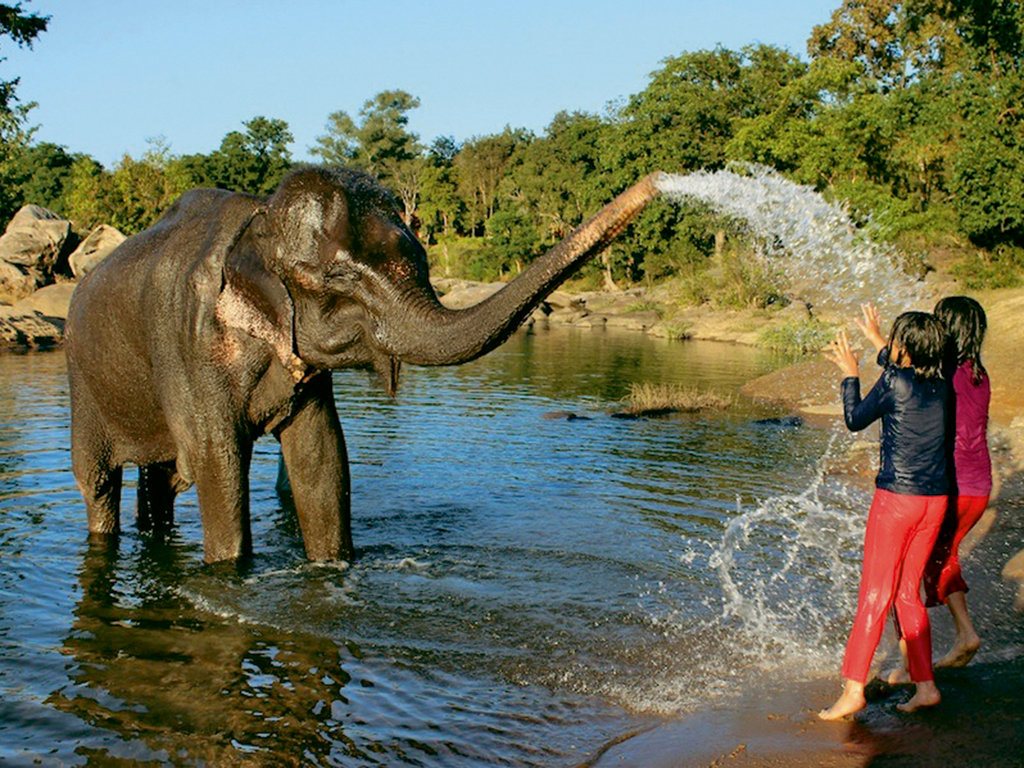Do you know what is the national animal of India? The Bengal Tiger, your mind immediately responds. Ok, but do you know what is the national heritage animal of India? That privilege was conferred upon our beloved pachyderms in light of their dwindling numbers and precarious existence in the country today.
If chimpanzees and orangutans are our closest biological counterparts in the wild, it’s the elephants that mirror our emotional lives out there. Mike ‘Nick’ Nichols calls them our ‘spiritual ancestors.’ Don Ross writes in Aeon, “When you’re with a herd of elephants, you’re not alone at all; you’re in a highly charged atmosphere, shimmering with presence and feeling.” Photographer and journalist Arati Kumar Rao, whose been trailing elephants for years, says, “To me, elephants are like humans: emotional, demonstrative, temperamental, caring, nurturing, fiercely protective of offspring, and sometimes dangerous. Their behaviour intrigues me, and I love them.”
On World Elephants Day, we take a look at some instances of how elephants are faring in India. Some stories of the abject cruelty heaped on them and some of the love and adulation they are basking under.
Tara is the star of Mark Shand’s bestseller, ‘Travels On My Elephant.’ She had begun life as a begging elephant who had to scrounge a living for herself and her keepers. She was purchased by Mark in Orissa who then rode on her, very gently, across several hundred miles. He then gifted her to conservationists Anne and Belinda Wright so she could enjoy a happy retirement at their Kipling Camp in Madhya Pradesh.

Guests can accompany Tara on her daily 2 kilometre walk to the river, help her mahout bathe her and play with the extremely friendly and adorable elephant if she’s in the mood.
Capturing elephants and training them for various jobs – be it leading marriage processions, logging, communication purposes and so on – was a common practice in northeast India not long ago. With the advent of goods vehicles and the banning of logging such elephants were made redundant and let loose.
Having no skills to survive in the wild and often suffering from work-induced injuries that impaired them significantly, such elephants were reduced to begging on the streets. Smiling Tusker Elephant Camp, located on the edge of Assam’s Manas National Park, rehabilitates these tuskers and provides a safe haven for them to frolic around in.
It was started by a group of local friends under the aegis of the NGO Anajaree. They were dismayed by the conditions of the once grand Asiatic elephants and wanted to rehabilitate them in conditions as close to their natural habitat as possible. Visitors are encouraged to bathe and feed the animals and learn about the elephant heritage of Assam.
Elephant tourism in Jaipur is commonplace. What most visitors are unaware of, or choose to ignore, are the cruel conditions under which most of the elephants are imprisoned when not being ridden or being paraded around as exotic treats. Sadly, the situation of temple elephants are the worst.
Rahul Choudhary is a fourth-generation mahout who was disturbed by this prevalent culture of elephant abuse. He set up Elefantastic on the outskirts of the city, near Amer Fort, as an elephant farm where mahouts and their charges could live together peaceably. It houses elephants rescued from circuses, temples and other torturous circumstances. Visitors are allowed to bathe, feed and even pain them using non-toxic colours.
As forests are destroyed to make way for agriculture and ‘development’, it renders elephants’ refugees in their own land and creates uncontrollable human-animal conflict. A herd of 25 elephants had to move to Athgarh in Orissa around 2012. They had moved away from the Chandak-Dampara Wildlife Sanctuary which had suffered degradation owing to years of habitat destruction and unchecked urban expansion. The elephants stayed in patches of forests in the daytime and came out searching for food in the evenings. Given that it’s primarily an agricultural area and their food consisted of crops, such activities were not welcomed by locals.
In 2017 conservationist Cara Tejpal captured a video of a mob of around 300 men descending on the elephants as they were about to make their evening sojourn. She watched as they pelted the animals with stones and harassed them for three hours straight.
Further investigation revealed that harassing elephants in the evenings had become a daily entertainment for the mob. “I watched these beautiful animals, so many little elephant calves included, being tormented for three hours that evening! And this is a routine that plays out regularly, week after week,” Cara said in an interview.
In south Bengal, where human-elephant conflict is at a peak, villagers form hullah parties to tackle the menace to their crops. Sticks wrapped with cloths are soaked in kerosene and lighted. These are used to chase the elephants away. What’s even more heart-breaking is that the forest department supplies villagers with firecrackers and fireballs to use on the elephants. State sanctioned violence is cheaper than paying reparations to irate villagers whose crops the elephants destroy.
One can in no way blame the poor villagers desperate for protecting their livelihood. These drastic circumstances are a consequence of decades of habitat destruction. Animal preservation cannot come at the cost of human survival. But humans cannot survive if animals are driven to extinction either.
Elephants occupy a prominent role in India’s culture, religion and mythology. It’s unconscionable that villagers who once deified them are driven to throw firecrackers at them. It’s not too late but one day it will be. On this World Elephant Day, let’s lobby governments and hold local governance accountable for our rapidly decreasing forest cover. And, in the process, show some kindness to the gentle giants who call India home.